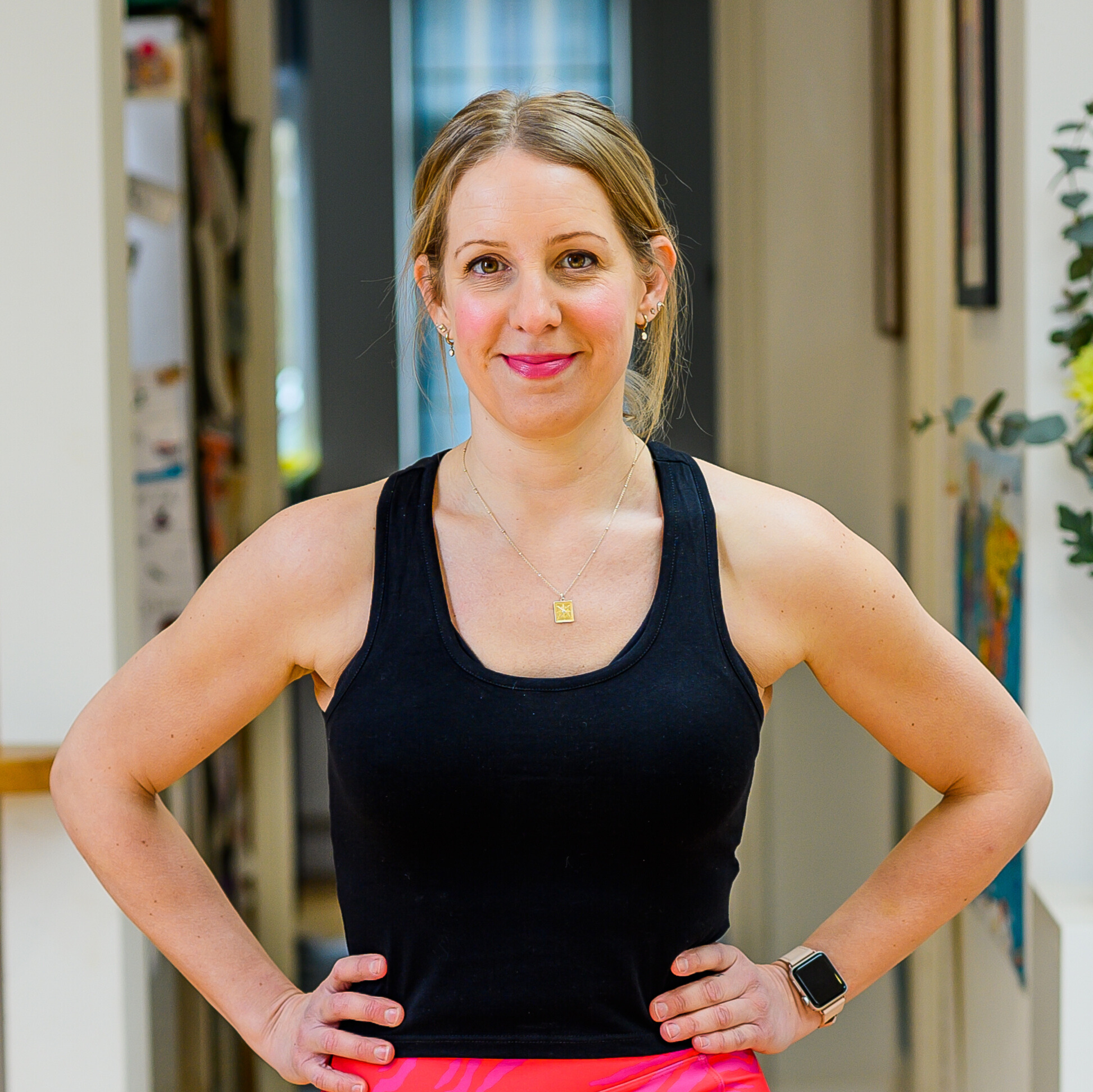How to choose walking shoes
Confused about how to choose walking shoes? We spoke to the experts to find out everything you need to know


Want to know how to choose walking shoes? To avoid foot pain and injuries, it’s important to find a purpose-designed pair rather than just throwing on some sneakers. Ideally, you need the best shoes for walking to support your feet correctly.
“Well-chosen walking shoes can be the difference between an enjoyable walk and painful blisters,” says George Hill, a podiatrist at Fleet Street Clinic.
The American College of Sports Medicine (ACSM) recommends that American adults participate in walking or other moderate-intensity exercises for at least 150 minutes a week to reduce their risk of cardiovascular disease, Type 2 diabetes, and obesity. And if you want to lose weight by walking, you should aim for 250 minutes or more of walking at a moderate intensity per week.
How to choose walking shoes
Cushioning
“In all circumstances, no matter what terrain you will be traversing, good cushioning is important for a comfortable piece of footwear,” says Hill.
“Think about the type of ground you will primarily be covering – city pavements and roads are actually far harder on the feet compared with walks through fields and grasslands. Also, consider your own foot type and condition. Someone that suffers from bunions, for example, may need more cushioning for comfort.”
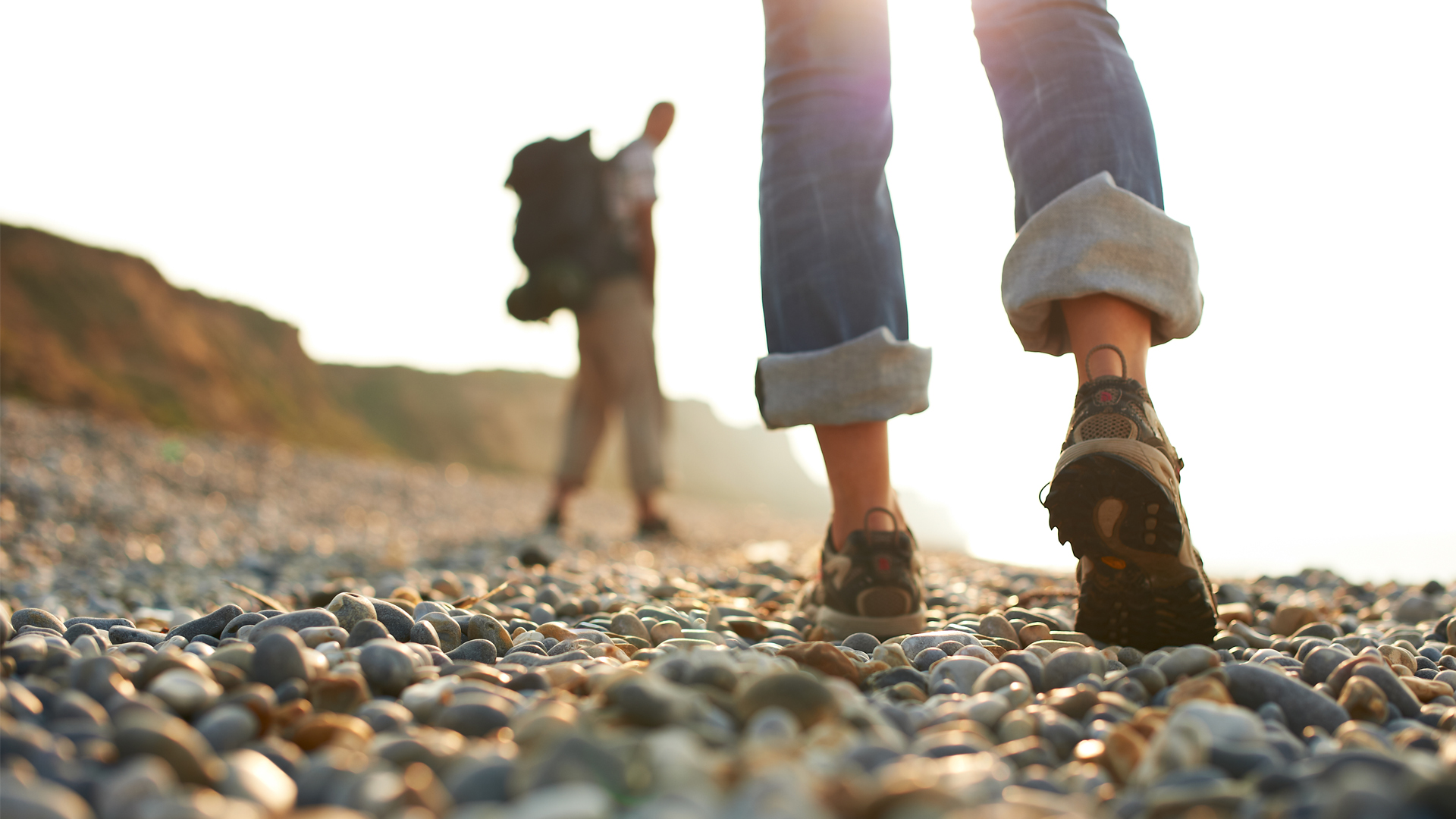
Sizing and toe box
“Walking shoes might need to be slightly larger to accommodate for thicker socks,” says Hill. “Having your feet measured for length and width is a good way to give you an idea of what size you might need, however, many shoe manufacturers will have different design characteristics.”
For this reason, Hill says it’s wise to try out shoes in person. He suggests that boots should be snug, but not tight, and that you should be able to comfortably wiggle your toes. Plus, your foot shouldn’t feel as if it’s shifting as you walk.
Start your week with achievable workout ideas, health tips and wellbeing advice in your inbox.
Flexibility
Shoe flexibility requirements will also differ between individuals, says Hill. “Rocky terrain will require a stiffer, boot-style shoe to shield the arch from stone or uneven ground and higher ankle support to protect the ankles from rolling.”
Never forget that personal preference is always a factor. “My personal preference is a stiff, well-fitted boot for all my walking and hiking needs,” says Hill. “But they are heavier on the legs and more difficult to get on and off than something like a hiking trainer or shoe, which others may prefer.”
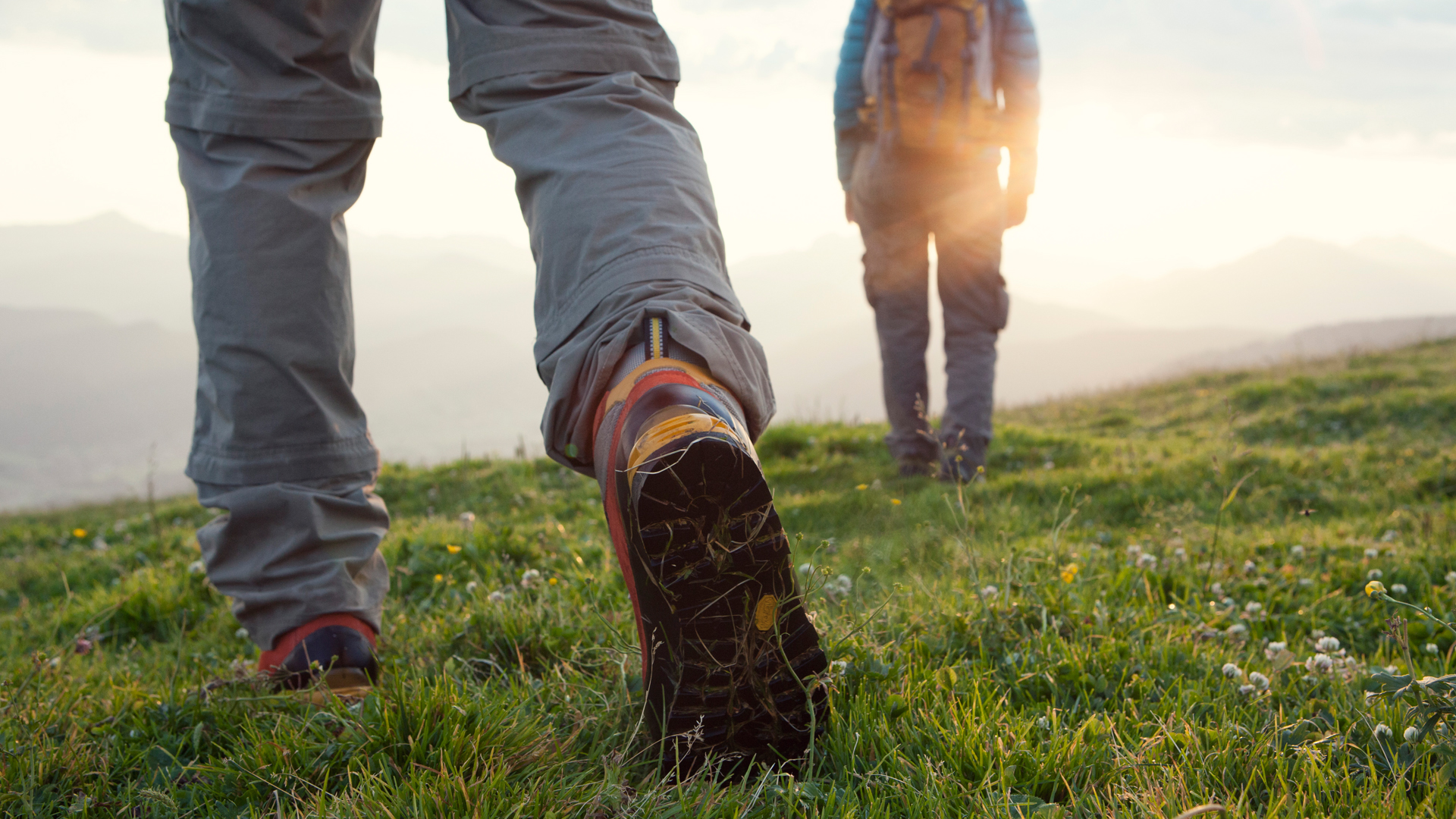
Heel counter
The heel counter is responsible for rear foot stability and is located in the back of the shoe.
“A good solid shoe or boot will have a stiffer heel counter with cushioning at the rim, to provide the support you need when walking,” says Hill. “Something to think about when assessing old shoes is the external wear at the heel. If it is excessive, or one side is far more worn than the other, it is time to replace the shoe. A worn heel can affect you while walking and might increase the risk of injury.”
Heel slippage
Most of us will be familiar with painful heel blisters after long walks, but a well-fitting shoe can help to avoid these so we can experience the full benefits of walking.
“Some shoes or boots will have extra padding to keep the heel in place, and others have improved support below the heel,” says Hill. “If you notice slippage, there is an issue with fit that should be addressed.”
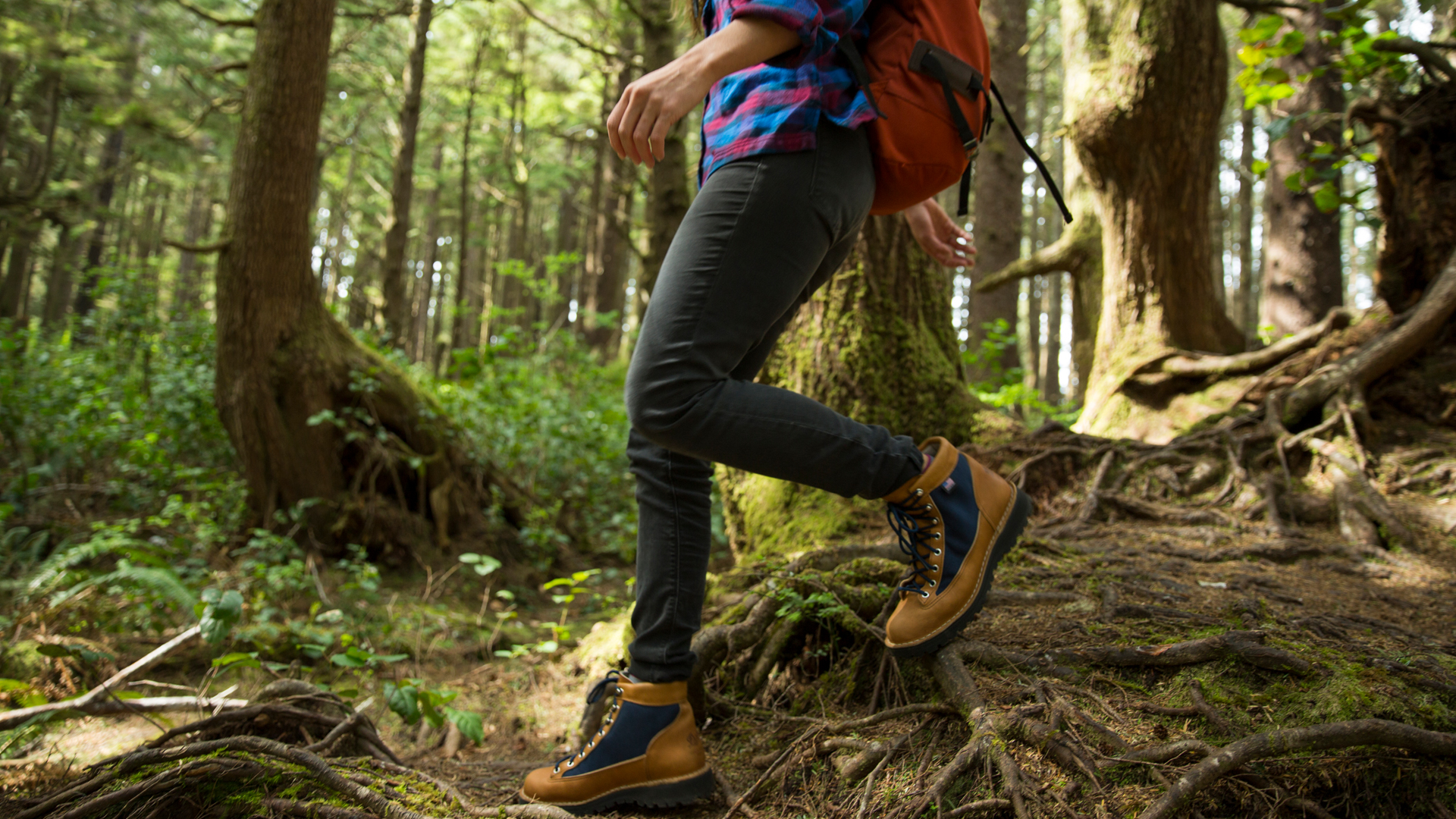
Midsole
“The midsole will usually provide the majority of the structural support for a shoe and some people will find they will require a slightly stiffer shoe, some slightly less,” says Hill.
“Walking over rocks and stones, for example, will require a more stable shoe with a dense midsole. You might find that you require more flexibility and movement out of your shoe though, and each scenario will be different.”
Insole
Insoles – to wear or not to wear? Well, it really depends on your needs and the situations you expect to find yourself in. “In the simplest forms they can add a bit more cushioning and fill up a little space if you’re in between shoe sizes,” says Hill.
“In more complex forms, insoles can be used to support the ankle, offload areas of your foot [reducing pressure], stabilize joints, and increase shock absorption.
“If you have had previous injuries or are prone to rolling your ankles, you may require a bespoke device. But some people will never consider adding an innersole, and that’s fine, too.”
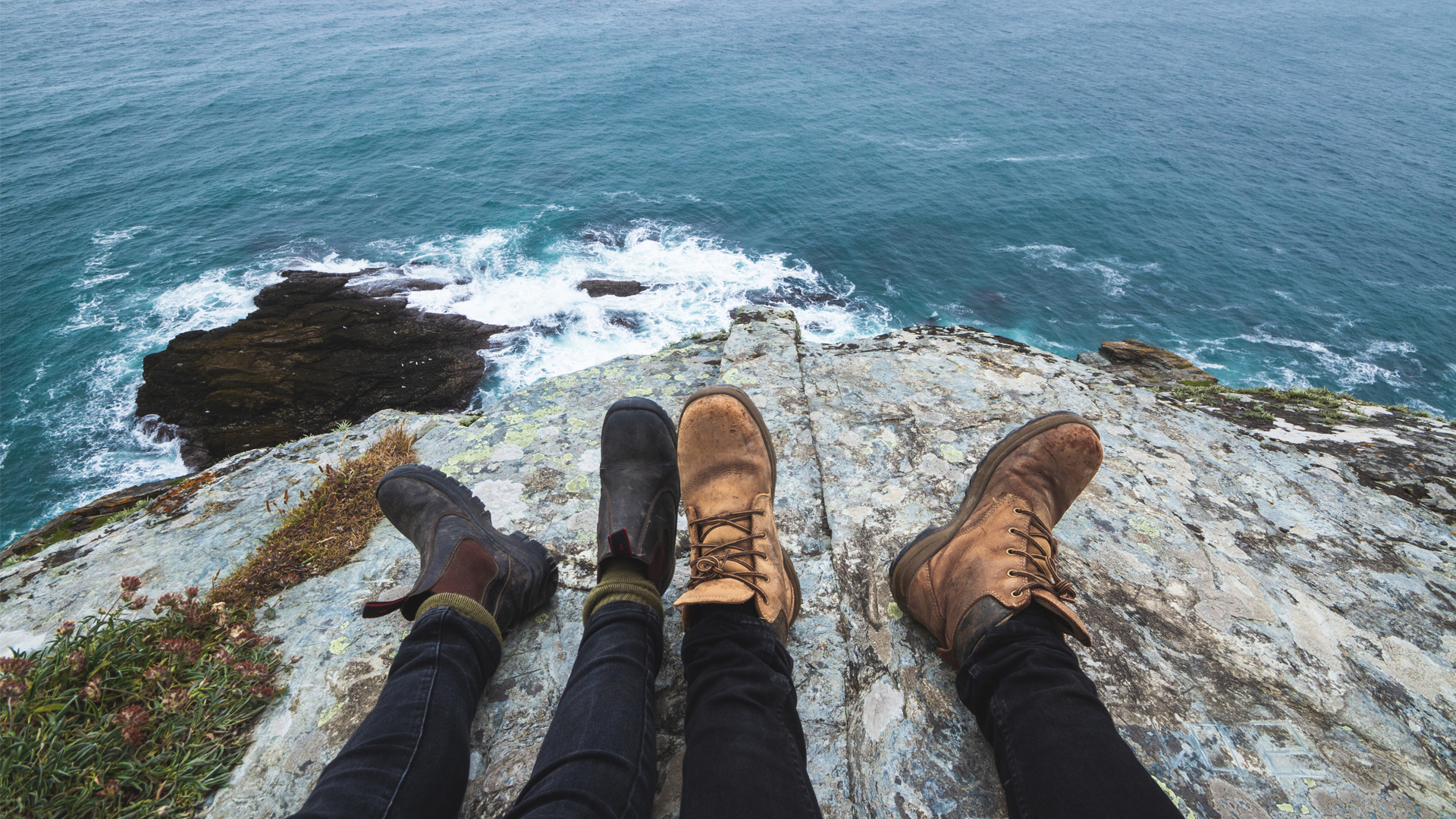
Breathability
Depending on where you are walking or hiking, you might want to take breathability and waterproofing into consideration before making a purchase. “If you were walking in wet fields a lot, for example, you would be much more likely to get bacterial and fungal infections such as Athlete’s Foot from the excess moisture,” warns Hill.
Walking shoes vs boots
There are some key differences between walking shoes and boots. “Walking boots are taller in height and cover the whole ankle,” explains Hill. “This extra height offers more support on uneven terrain, plus protects against accidental knocks.” The downside is that they tend to be heavier and bulkier than walking shoes.
“If you prefer to walk shorter distances on mixed terrains, shoes may be the option for you,” says Hill. “But they will not offer you the full support that a boot provides.”
When should you replace walking shoes?
When your walking shoes look worn or the arch has become soft and starts to break down, it’s time to invest in a new pair. Plus, if you notice that the fabric has torn inside and it’s uncomfortable, this could lead to rubbing and blisters.
“Running shops say that you should invest in a new pair of walking boots every 200-400 miles,” says Hill. “Saying that, I have had mine for ten years and they are still comfortable!”
Maddy Biddulph is a journalist specializing in fitness, health and wellbeing content, with 26 years in consumer media working as a writer and editor for some of the bestselling newspapers, magazines and websites in the US and UK, including Marie Claire, The Sunday Times and Women’s Health UK.
She is a CIMPSA-certified PT and works one-on-one with clients, as well as running Circuits Club classes which mixes cardio and strength training and chair-based exercise classes for seniors.
